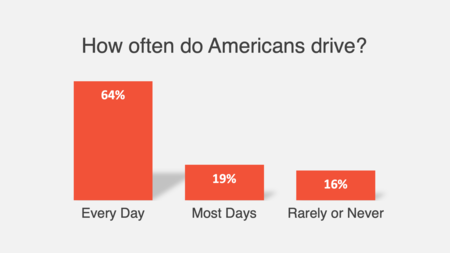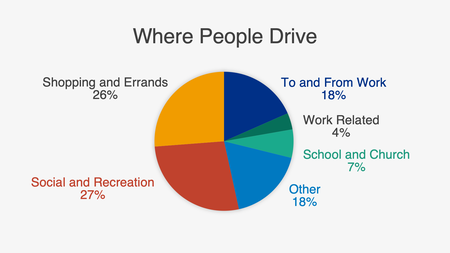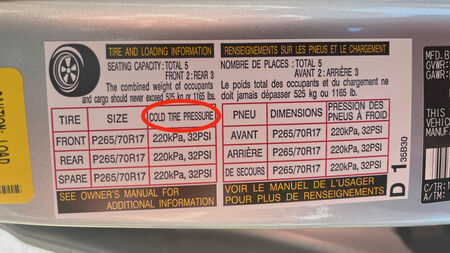
5 ways to reduce your carbon footprint and still drive
If you drive a lot, you’re not alone. Almost two thirds of Americans drive every day. Altogether we put over 3 trillion miles on our cars last year! No wonder transportation is a major source of greenhouse gas emissions.
Most of us have heard of ways to decrease our carbon footprint — bike or walk short distances, use a bus or train for longer trips, or purchase an electric vehicle. These lifestyle changes are great solutions, but require a significant effort or cost. Fortunately, you can also make a difference with small changes to your driving habits.
“Leaving your car at home just two days a week can reduce your GHG emissions by over 3,000 pounds per year.”
1. Combine errands
On average, Americans take 3 trips in a vehicle every day, adding up to over 30 miles. Surprisingly, we drive more for shopping and errands than we do for work. Try thinking about your daily errands and see if some can be combined. For instance, stop by the grocery store on your way home from work instead of making a separate trip. You’ll save time as well as gas.

2. Drive less aggressively
Take it easy at the stop lights. If you see a red light ahead, take your foot off the gas a little earlier and coast. Then when the light turns green again, you don’t have to go full speed instantly. Aggressive driving wastes gas. It can lower your gas mileage by roughly 15% to 30% at highway speeds and 10% to 40% in stop-and-go traffic. You may even discover that calm driving helps you relax overall.
3. Carpool
Cut down on driving by sharing rides to your recreational activities or to work. If you have kids, get together with other families and take turns driving to school or activities. As a side benefit, you will have extra free time when other parents are driving.
4. Stop idling
If you are parked and waiting, turn off your car instead of letting it idle. This is especially important at schools, where your emissions are directly affecting children. The US Department of Energy recommends turning off your car whenever you will be stopped for 10 seconds or more.
5. Check your tires
You can improve fuel economy and reduce emissions simply by keeping your tires inflated properly. Look on the frame of the driver’s door to learn the correct pressure and check it yourself with a tire gauge. You can add air at a local gas station or even use a bike pump at home.

Every bit helps. Try changing one of your driving habits today and encourage your friends to do the same. Together we can have a significant impact on greenhouse gas emissions.